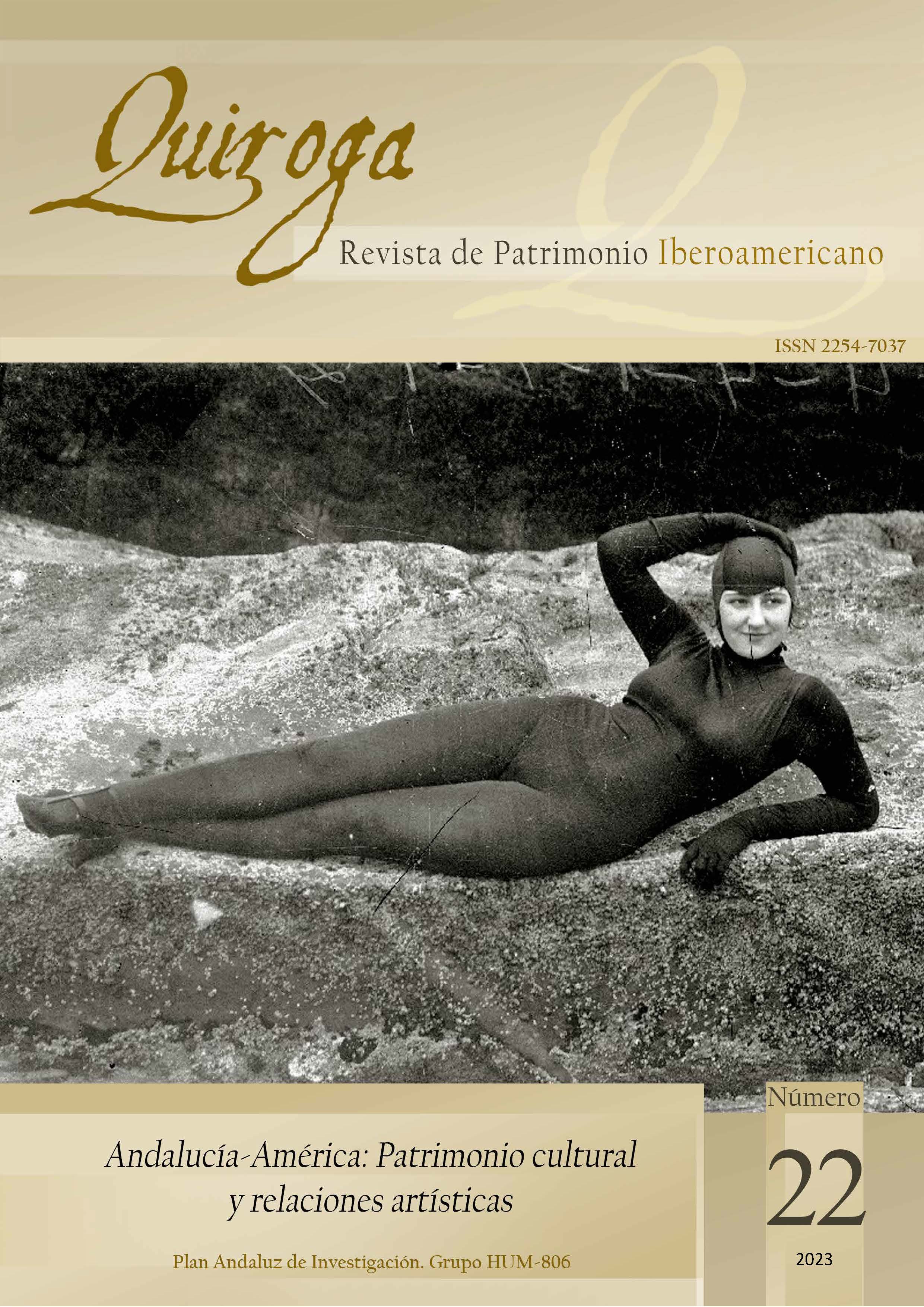Cuerpos puzzle femeninos en la deriva del cine mudo fantástico serial
DOI:
https://doi.org/10.30827/quiroga.v0i22.0002Palabras clave:
Cine mudo, Corte, Cuerpo, Fantástico, FemeninoResumen
El objeto de estudio principal en esta investigación es el corte del cuerpo femenino en el cine mudo fantástico español, diseñando una metodología de análisis propia, que será llamada el Triple Corte. La evolución de los diferentes cortes que atraviesan los cuerpos se analizarán en la deriva del primer muy escaso fantástico español serial, como las obras de Alberto Marro con La secta de los misteriosos de 1916 y la Hispano Films o Magín Murià con El beso de la muerte de 1917 y el Barcinógrafo.
Descargas
Citas
AGUILAR, Carlos “Fantasía española: negra sangre caliente”. En: VV.AA., Cine fantástico y de terror español 1900-1983. San Sebastián: Donostia Kultura, 1993, págs.9-70.
ARHEIM, Rudolph. Arte y percepción visual. Madrid: Editorial Akal, 1990.
BARTRA, Eli y ESTEVE, Llorenç. “La I Guerra Mundial y el auge del cine catalán: un estudio de Barcinógrafo y de Magí Murià”. Filmhistoria online (UB), 4 Nº2 (1994) Disponible en: https://revistes.ub.edu/index.php/filmhistoria/article/view/12240. [Fecha de acceso: 05/02/2023].
BELLO CUEVAS, Jose Antonio. “El cine español (1896-1930): origen y evolución de sus géneros y estructuras industriales”. Filmhistoria Online (UB), 22 Nº2 (2012). Disponible en: https://revistes.ub.edu/index.php/filmhistoria/article/view/13905. [Fecha de acceso: 20/01/2023].
BELLO CUEVAS, Jose Antonio. Cine mudo español 1896-1920, ficción, documental y reportaje. Barcelona: Laertes S.A., 2010.
BOIX, Josep Arimont, 1924. Entrevista con Margarita Xirgu. Revista Joventut. 20 de septiembre.
CANALS BOTINES, Mireia. “Els personatges femenins fatals del cinema espanyol dels orígens”. Quaderns de Cine, Cine i feminisme 5 (2010). Disponible en: http://hdl.handle.net/10045/13956. [Fecha de acceso: 30/01/2023]. DOI: https://doi.org/10.14198/QdCINE.2010.5.04
CARDONA ARNAU, Rosa. “La recuperación de la versión para el mercado alemán de la secta de los misteriosos (Alberto Marro, 1917)”. Secuencias: revista de historia del cine (UAM), 26 (2007) págs. 66-80. Disponible en: https://repositorio.uam.es/handle/10486/3940. [Fecha de acceso: 10/01/2023].
DUBOIS, Philippe. El acto fotográfico, de la representación a la recepción. Barcelona, Buenos Aires: Paidós Comunicación, 1986.
DUQUE, Ricardo. Fragmentación, simultaneidad, choque o contraste y modularidad en la videosfera. (2002) Disponible en: http://www.jstk.org/txt/videosfera.html [Fecha de acceso: 10/12/2022].
ELÍAS, Francisco (1929). El misterio de la Puerta del Sol [Película].
FEUILLADE, Louis (1913). Fantômas. A la sombra de la guillotina [Película].
FEUILLADE, Louis (1914). Fantômas contra Fantômas [Película].
FEUILLADE, Louis (1915). Fantômas. Les Vampires [Película].
FEUILLADE, Louis (1916). Judex [Película].
FILMOTECA DE CATALUNYA. La Secta de los misteriosos [Película]. Disponible en: https://www.youtube.com/watch?v=QDVaCTB9wf8. [Fecha de acceso: 24/01/2023].
ILLOUZ, Eva y KAPLAN, Dana. El Capital Sexual en la Modernidad Tardía. Barcelona: Herder, 2000.
MARRO, Alberto (1916). La secta de los misteriosos [Película].
MARRO, Alberto (1915). Los Misterios de Barcelona [Película].
MINGUET I BATLLORI, Joan. Paisaje(s) del cine mudo en España. Valencia: Ediciones de la Filmoteca del Instituto Valenciano de Cinematografía, 2008.
MULVEY, Laura. “Visual Pleasure and Narrative Cinema”. Film Theory and Criticism: Introductory readings. Eds. Leo Braudy and Marshall Cohen (New York: Oxford UP), 1999, págs. 833-844. DOI: https://doi.org/10.1515/9781474473224-009
MURIÀ, Magín (1917). El beso de la muerte [Película].
REGUILLO, Antonia del Rey. “Los borrosos años diez, crónica de un cine ignorado (1910-1919)”. Ed. Liceus, Biblioteca virtual E-Excelence, (Valencia), (2005). págs. 3-5. Pág. 4. Disponible en: http://www.liceus.com/cgi-bin/aco/areas.asp?id_area=3 [Fecha de acceso: 31/01/2023].
Descargas
Publicado
Cómo citar
Número
Sección
Licencia
(c) Quiroga. Los originales publicados en la edición electrónica de esta Revista son propiedad de la misma, siendo necesario citar la procedencia en cualquier reproducción parcial o total.
Salvo indicación contraria, todos los contenidos de la edición electrónica se distribuyen bajo una licencia de uso y distribución "CREATIVE COMMONS RECONOCIMIENTO-NO COMERCIAL 4.0 ESPAÑA" (CC-by-nc). Puede consultar desde aquí la versión informativa y el texto legal de la licencia. Esta circunstancia ha de hacerse constar expresamente de esta forma cuando sea necesario.













